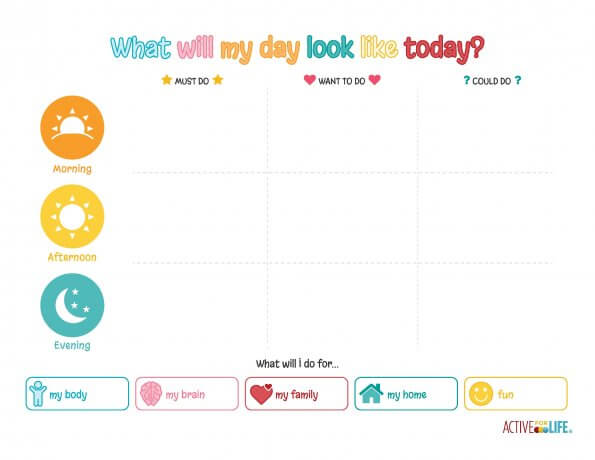
8 ways to help your child’s feelings of anxiety
Editor’s note: This article was updated on Jan. 20, 2023.
It’s been a stressful couple of years—for adults and children alike. It’s important to look for the signs of anxiety in your kids and to address them as well as you can.
According to Janet Morrison, a psychological associate who has provided assessments and psychotherapy for children for over 25 years and is a lecturer at the University of Toronto’s Factor-Inwentash Faculty of Social Work, the symptoms of kids’ anxiety can range from obvious signs like crying or rage to more subtle things like stomachaches or changes in eating habits. Parents are usually the best judge of what is normal, and what may be a sign of concern, she says.
Parents know their kids better than anyone and can sense when something is off.”
-Janet Morrison, psychological associate
According to Morrison, the most common signs that your child may be feeling anxious are:
- Increased crankiness or anger which may involve more fighting than usual with siblings
- Stomachaches
- Disturbances in sleep patterns, nightmares
- Change in appetite, either eating more or less
- Headaches
- Bouts of crying
- Meltdowns (more than usual) over small things such as getting dressed or brushing their teeth
What to do to help your anxious child
Here are eight simple strategies you can add to your “toolbox” to support children as they work through feelings of anxiety or stress:
1. Talk, and encourage kids to express emotions
As in any situation, it’s important to keep the lines of communication open with your children. In these uncertain days, it’s essential that kids be able to express their emotions.
Morrison recommends that you ask kids directly what they’re worried about if they’re showing signs of anxiety. They may not be worried about the things you expected, and they may not be able to express their worries fully. Let their questions guide the conversation.
Many parents wonder how exactly to explain to their children why they’re not going to school or able to visit the park. Morrison advises reminding your child that they don’t go to school or daycare if they’re sick, and their friends don’t go when they’re sick. Parents can say: “We want to stay healthy and this is the best way that we can all find to stay healthy.”
2. Reassure kids by focusing on the “helpers”
Kids want to know that something is being done to keep us healthy. They want to know that action is being taken. Assure your kids that doctors and scientists are working hard to stop the virus (or to get rid of the germs) and that everyone, including them, can help by doing important things like washing their hands and sneezing into their sleeves or a tissue. As Mr. Rogers famously said, “If you look for the helpers, you’ll know there is hope.”
3. Create a “new normal” by developing regular routines
Kids are used to structure from daycare and school and, according to Morrison, it’s the planned activities that, anchor their days. Tell your kids, “This is the time we’re going to get dressed, this is the time we’ll be doing arts and crafts, this is the time we’ll be going outside.” Show them the clock and talk about what will be happening when. The schedule doesn’t have to be planned down to the minute and slipping here and there isn’t a huge issue. What’s important is that kids know what they can anticipate.
Here’s one example of a simple tool you can use to help kids plan their day:
4. Keep kids’ spirits up with games, activities, and outdoor play, every day
There’s nothing like a whole lot of laughter and fun to keep kids’ spirits up. Morrison urges that it’s extremely important to get outside every day to get fresh air, to run off steam, and to enjoy nature.
With spring arriving, it’s a perfect time to point out the flowers poking out of the soil, the birds returning to their neighbourhoods, or the grass which (hopefully!) now has no snow on it. Don’t let rainy days stop you: puddle play is fun too!
When you can’t get outside, pull out board games, cards, arts and crafts supplies, outdoor toys, and make fun the cornerstone of every day. Here are a few ways you and your kids can boost your mood through play:
- 49 fun physical activities to do with kids aged 2-4
- Sprinkler games for hot days
- 13 fun activities to play in the dark
- 4 ways to add fun to household chores
- 7 fun & friendly indoor activities
5. Schedule quiet time every day
While kids need fun to lighten their moods, Morrison emphasizes the need to also decompress with individual quiet time scheduled into every day. This time could be when kids nap, read, colour, or do a puzzle. You can set the stage by teaching kids to meditate, and starting quiet time with a few minutes of stillness and deep breathing together.
6. Keep kids away from the news
As much as we want to keep up to date on how the fight against the virus is going, it’s best that parents keep the news to a minimum to eliminate any extra potential anxiety, Morrison says. Likewise, try to limit how often you talk about the virus with other adults when children are in earshot.
7. Focus on your own mental health
Kids sense the feelings of others. It’s important to try to minimize your own anxiety so you can remain calm and reassuring, and model healthy coping skills.
Being in tight quarters with your family, trying to keep up with your own work, or seeing the news of the day can be anxiety-provoking. “Everyone is vulnerable to that,” says Morrison. “That doesn’t make you a bad person. It makes you a person.”
It is so essential to keep in mind that during all the uncertainty, nothing has to be perfect. If your urns don’t have spring flowers, it doesn’t matter. If you haven’t cleared out that closet you promised you would this spring, it will still be there in the winter. Setting these types of goals will only lead to your own frustration.
Go easy on yourself, Morrison advises, and take care of yourself too. Schedule quiet time into every day. Check in with friends and family via texts, phone, or a video call. Keep up your own food, hygiene, and exercise practices. Schedule your own activities into every day, whether it be a comedy you want to watch, a bubble bath, or a book you’ve been wanting to get to. At the end of each day, give yourself a pat on the back for every small accomplishment.
8. Look for the “silver lining”
One final piece of advice: this is actually a great time to talk to your kids about what they’ve enjoyed doing while at home and off school, says Morrison.
Maybe your kids have discovered that they love having more time for free time in the backyard, making up their own games, or performing plays they’ve put together more than the after-school activities and programs that kept them busy before. Or maybe the time away has made them appreciate how much they really do love hockey, swimming, or dance class.
Be open to hear whatever they are feeling. While we must be alert and responsive to the anxiety and stress they have been under, this can also be a time to celebrate the chance that kids have had to discover and develop new forms of play.







Thank you for the useful advices. It’s been very helpful 🙂